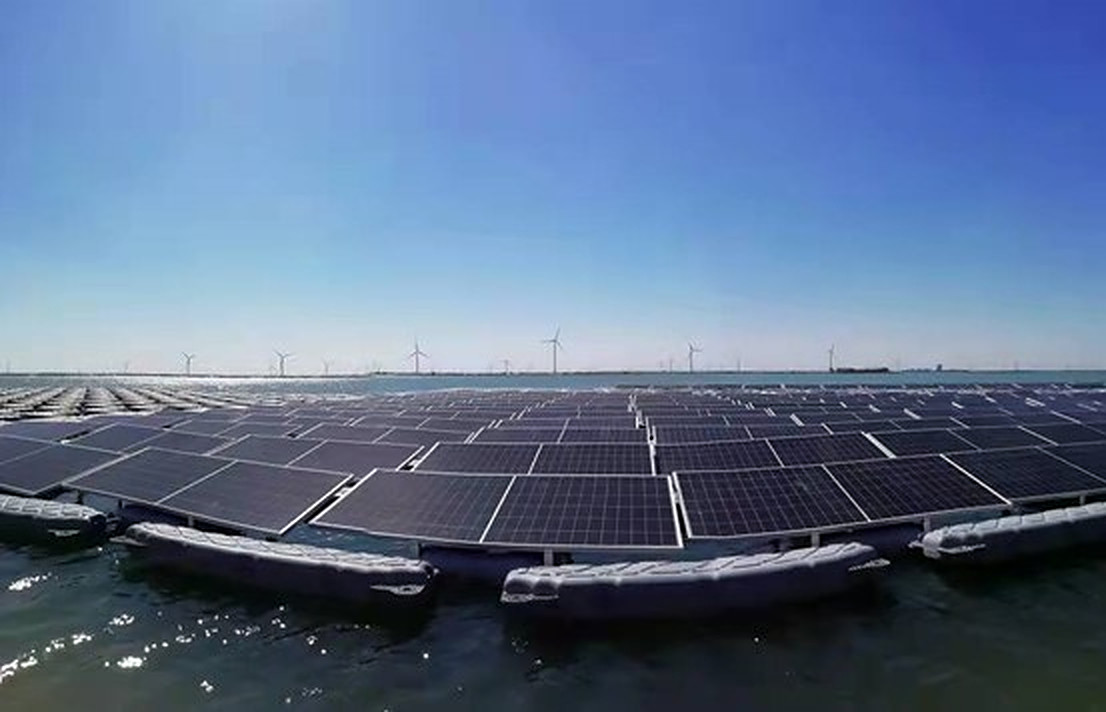A team of researchers from China has assessed the potential for floating photovoltaics (FPV) in China and found that the technology can address regional differences in land and water availability for PV systems while simultaneously helping to meet the country’s growing energy demand.
According to the scientists, the installation of terrestrial PV (TPV) projects in places where demand is highest faces serious constraints due to low land availability and high rental costs.
“The emergence of floating photovoltaics (FPV) provides an alternative to solve the tension between increasing solar energy demand and the constraint posed by land availability, especially in eastern China,” the researchers noted. “For the three northern areas, there are abundant land resources while limiting the potential for FPV. For east and south China, where economic activity is more developed, FPV can largely alleviate the land constraint in developing solar power.”
For the evaluation of the potential for TPV systems, the team used the GIS-based multiple-criteria decision analysis (MCDA) to estimate available land area, selecting areas with an altitude less than or equal to 3000 m and with total radiation greater than or equal to 1,600 kWh/m2, 1,300 kWh/m2, and 1,100 kWh/m2 for three different China's macro-regions dubbed Class I, II, and III solar resource areas, respectively.
The researchers excluded natural lakes from consideration since FPVs can block sunlight from the water surface and damage their ecological environment. Therefore, to estimate the potential for FPV installed capacity, the paper includes 875 representative reservoirs – 76% of China’s total.
The results of the assessment show that the higher power-generation efficiency of FPV more than compensates for the higher initial investment cost compared with TPV. This means that in areas of China where electricity tariffs are higher or solar is more abundant, the lifetime economic payback of FPV can outperform that of TPV.
Researchers found the potential installed FPV capacity could reach as high as 862.6 GW with a potential annual power output of up to 1,423.8 TWh. It was also estimated that FPVs could reduce water evaporation by about 5.8 km3 per year, while conserving 7,117.3 km2 of land. “On average, FPV systems located in Tibet, Guangdong, and Hainan gain the highest economic payback,” they said, noting that the Hubei, Guangxi, and Jiangsu provinces have the greatest potential for FPV due to their abundant water resources.
The team noted that the abundant hydropower resources would make co-deployment with FPV advantageous in Sichuan and Guangxi in particular. This coordination could stabilize PV energy output and compensate for seasonal fluctuations in hydropower output.
As for the paper’s assessment of TPV resources, the researchers recommend differing targeted promotion types among the provinces for distributed solar PV (DSPV). For example, in developed urban areas – such as in Guangdong and Jiangsu – DSPV for the commercial and industrial sectors should be prioritized, while populated provinces could focus on residential PV in rural areas.
“The total carbon emission reduction potential derived from FPV can reach 1078.6 Mt per year,” the paper states. “Guangxi, Hubei, and Hunan would gain the greatest carbon emission reduction benefits due to their high potential installed capacity. For Henan and Jilin, their thermal power carbon emissions are relatively high, so these two provinces also gain considerable carbon emission reduction benefits.”
The scientists introduced their findings in the study “Assessment of floating solar photovoltaic potential in China,” which was published in Renewable Energy. The paper’s authors included researchers from Beijing Normal University, Peking University Shenzhen Graduate School, and the Shenzhen Oriental Fortune Capital Investment Management Company Limited.
This content is protected by copyright and may not be reused. If you want to cooperate with us and would like to reuse some of our content, please contact: editors@pv-magazine.com.




1 comment
By submitting this form you agree to pv magazine using your data for the purposes of publishing your comment.
Your personal data will only be disclosed or otherwise transmitted to third parties for the purposes of spam filtering or if this is necessary for technical maintenance of the website. Any other transfer to third parties will not take place unless this is justified on the basis of applicable data protection regulations or if pv magazine is legally obliged to do so.
You may revoke this consent at any time with effect for the future, in which case your personal data will be deleted immediately. Otherwise, your data will be deleted if pv magazine has processed your request or the purpose of data storage is fulfilled.
Further information on data privacy can be found in our Data Protection Policy.